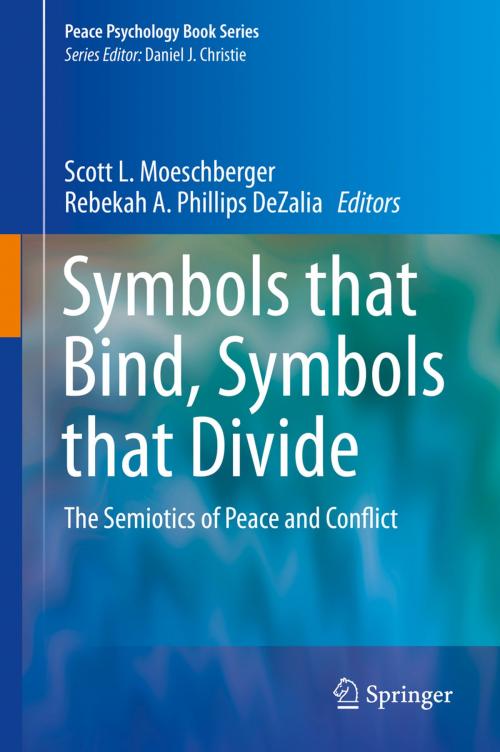Symbols that Bind, Symbols that Divide
The Semiotics of Peace and Conflict
Nonfiction, Health & Well Being, Psychology, Personality, Social Psychology| Author: | ISBN: | 9783319054643 | |
| Publisher: | Springer International Publishing | Publication: | May 14, 2014 |
| Imprint: | Springer | Language: | English |
| Author: | |
| ISBN: | 9783319054643 |
| Publisher: | Springer International Publishing |
| Publication: | May 14, 2014 |
| Imprint: | Springer |
| Language: | English |
This work explores the function of both divisive and uniting symbols in various conflict settings around the world. It takes a fairly broad perspective on what constitutes a symbol, to include objects such as flags, signs, language, and monuments, all of which convey conflicting meanings in a society affected by conflict. In addition, the authors include commemorations and other dynamic events that serve as a means for groups or individuals to connect with past generations, celebrate a heritage, and possibly express religiosity. In order to provide context for the nuances surrounding the symbols, there are brief historical overviews for each conflict featured in the volume. In each chapter, three issues are emphasized: the particular symbols that are divisive in the specific culture; how these symbols were used to perpetuate conflict; and how these symbols can be used or modified to bring unification. Contributions come from authors from around the world that have conducted empirical studies on intergroup relationships or have provided significant academic contributions in the area of symbols and collective memories represented in theoretical publications.
Taken together, the contents of the volume provide a rich tapestry of intellectual analyses to the diverse selection of conflict settings from around the globe. In addition to the nine case studies, there is an introductory chapter, which grounds the discussion in current peace psychology literature as well as provides future directions. This volume is a valuable resource to many, as the focus on symbols can span many disciplines such as political science, anthropology, sociology, psychology, and art. Furthermore, it is of significant interest to all scholars and peace activists studying these various countries and their conflicts.
This work explores the function of both divisive and uniting symbols in various conflict settings around the world. It takes a fairly broad perspective on what constitutes a symbol, to include objects such as flags, signs, language, and monuments, all of which convey conflicting meanings in a society affected by conflict. In addition, the authors include commemorations and other dynamic events that serve as a means for groups or individuals to connect with past generations, celebrate a heritage, and possibly express religiosity. In order to provide context for the nuances surrounding the symbols, there are brief historical overviews for each conflict featured in the volume. In each chapter, three issues are emphasized: the particular symbols that are divisive in the specific culture; how these symbols were used to perpetuate conflict; and how these symbols can be used or modified to bring unification. Contributions come from authors from around the world that have conducted empirical studies on intergroup relationships or have provided significant academic contributions in the area of symbols and collective memories represented in theoretical publications.
Taken together, the contents of the volume provide a rich tapestry of intellectual analyses to the diverse selection of conflict settings from around the globe. In addition to the nine case studies, there is an introductory chapter, which grounds the discussion in current peace psychology literature as well as provides future directions. This volume is a valuable resource to many, as the focus on symbols can span many disciplines such as political science, anthropology, sociology, psychology, and art. Furthermore, it is of significant interest to all scholars and peace activists studying these various countries and their conflicts.















